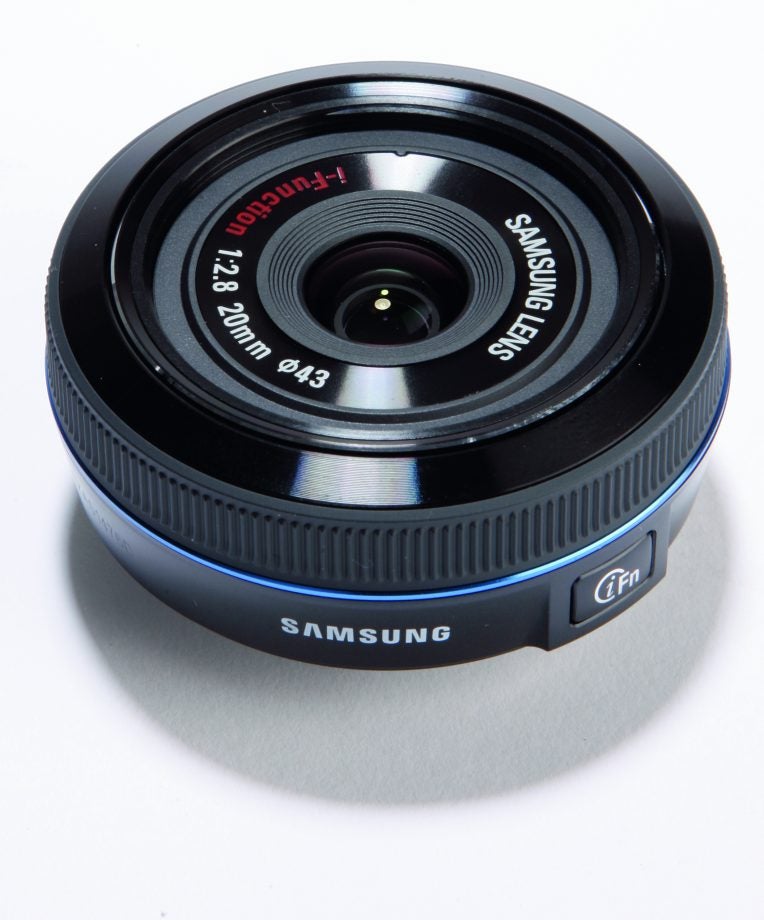Samsung 20mm f/2.8 NX iFunction Pancake Review
Samsung 20mm f/2.8 NX iFunction Pancake Review
The Samsung 20mm f/2.8 NX iFunction Pancake will have real size benefits when paired with a CSC body

Verdict
Key Specifications
- Review Price: £250
The move towards smaller camera bodies has brought a resurgence of interest in similarly compact lens designs and low-profile lenses that hug the front of the camera are often described as pancake on account of their extreme flatness. Samsungs 20mm lens, for example, protrudes just 24mm forward of the cameras lens flange.
Aesthetically, the result is very pleasing but the ultra-short lens barrel means compromises have to be made.
There is just one push-button switch and one rotating ring on Samsungs 20mm pancake lens: they are used to activate and control the cameras iFunction system respectively. This means there appears to be no facility to focus the lens manually – but in fact that is an illusion because when MF is set on the camera body the iFunction ring acts as a focusing ring until the iFunction button is pressed. (To activate the iFunction ring for manual focusing in AF mode it is necessary to select DMF in on a different menu page from the one that is used to select the AF mode, which seems a little strange.)
Given that Samsungs NX cameras use a larger-than-average APS-C format sensor, the conversion factor used to work out 35mm-equivalent lenses is just 1.5x, which gives the 20mm lens tested here the same angle-of-view as a 30mm lens used on a full-frame camera body.
This is a very versatile and useful coverage that can be employed for a wide range of subjects, from landscapes to environmental portraiture. The maximum aperture (f/2.8) is wide enough to give good separation between in-focus subjects and out-of-focus backgrounds.
Technical testing returned slightly lower MTF figures at wide apertures but this is consistent with the classic aerofoil profile and the figures remained above the critical 0.25 cycles-per-pixel level from f/2.8 to f/11.
The same was not true at f/22 but even here the MTF remained acceptable (0.22 cycles-per-pixel). There were slight signs of chromatic aberration visible on the test targets but nothing significant.
Real-world use of the lens proved highly satisfying, not least because its angle-of-view matches the area that the human eye concentrates on when absorbing a scene. This means the composition on the camera screen is consistent with the way the scene was originally viewed.
As somebody who used to love using a Ricoh GR-1 film-based camera with its fixed 28mm lens, the combination used here, of a Samsung NX200 body with the 30mm-equivalent 20mm lens, proved immediately rewarding and produced some very pleasing photographs.
Sample images



Verdict
Doubtless there are fixed-lens compact cameras that under-cut and out-gun the Samsung 20mm f/2.8 used in combination with an NX200 body but Samsungs offering comes out on top for sheer class and quality.

